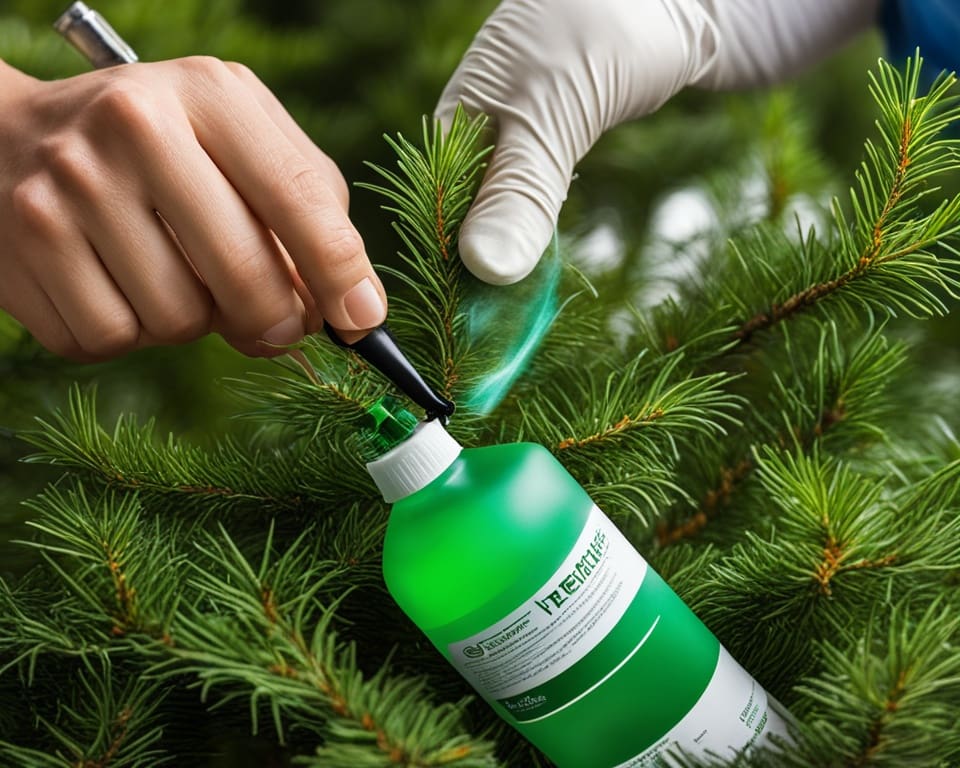Evergreen trees are a stunning addition to any landscape, providing year-round interest and greenery. However, just like any plant, they can face challenges from diseases and pests. Understanding how to treat diseases in evergreens is essential for preserving their health and longevity. Through proper evergreen tree care, timely intervention can prevent further damage, helping restore vitality to affected trees.
Recognizing the signs of distress is crucial in caring for sick evergreen trees. Stress factors, whether environmental or biological, can significantly impact their well-being. By prioritizing the knowledge of evergreen tree disease treatment, you equip yourself with the necessary tools to ensure that your evergreens thrive for years to come.
Understanding Common Evergreen Tree Diseases
Evergreen trees add beauty and value to any landscape. Understanding the nuances of common evergreen tree diseases is crucial for maintaining their health. Diagnosing evergreen tree illnesses early often leads to more effective treatments and can save your trees from severe damage. Look for early signs of distress to better protect your investment.
Identifying Symptoms of Disease in Evergreens
A keen eye is essential when it comes to spotting the symptoms of common evergreen tree diseases. Early detection can significantly influence the success rate of treatments. Key indicators include:
- Discoloration of needles, which may signal nutrient deficiencies or disease.
- Needle drop, where healthy foliage falls prematurely, often caused by environmental stress or pathogens.
- Unusual growth patterns, such as stunted or malformed branches, indicating the presence of pests or diseases.
Common Diseases Affecting Evergreens
Several prevalent diseases affect these majestic trees. Recognizing these can help in taking preventive measures. Some frequently encountered illnesses include:
- Root rot, usually resulting from waterlogged soil, leading to rapid decline.
- Needle blight, a fungal condition causing premature needle drop.
- Respiratory diseases in evergreen trees, including various fungal infections that impair tree respiration.
- Spruce budworm infestation, which can decimate foliage if not managed promptly.
The Importance of Early Diagnosis
Early diagnosis is vital for effective treatment. By diagnosing evergreen tree illnesses promptly, you can implement solutions that prevent the spread of disease to healthy trees. Timely intervention not only increases the likelihood of recovery but also preserves the overall health of your landscape.

How to Treat Diseases in Evergreens
Managing the health of evergreen trees requires an understanding of effective treatment strategies. The proper approach not only addresses diseases but also promotes recovery and long-term vitality. This section explores a range of options available for addressing issues in infected evergreens.
Effective Treatment Options for Infected Evergreens
When dealing with evergreen tree disease treatment, various effective treatment options for infected evergreens are available. Chemical treatments such as fungicides and bactericides prove essential for targeted interventions. Products like chlorothalonil and copper-based solutions provide targeted results for specific infections. Integrated pest management plays a vital role in combining both chemical and biological controls, ensuring comprehensive pest and disease management.
Natural Remedies for Evergreen Tree Diseases
For those seeking alternatives, numerous natural remedies for evergreen tree diseases exist. Organic solutions like neem oil offer a gentle yet effective means of pest management. Beneficial nematodes introduce natural predators to combat harmful insect populations. Homemade sprays using soap and water can effectively address mild infestations without introducing harsh chemicals, making them a sustainable choice for environmentally conscious gardeners.
When to Consult a Professional Arborist
Recognizing when to consult a professional arborist is crucial for maintaining tree health. Signs of extensive infestations or complex disease issues often indicate the need for expert intervention. An arborist can diagnose underlying problems and develop tailored approaches that integrate both evergreen tree pest control methods and advanced treatments. This collaboration ensures that your evergreens receive the best possible care for recovery and resilience.
Prevention and Care for Healthy Evergreens
Ensuring the health and vibrancy of evergreen trees starts with a proactive approach to evergreen tree disease prevention. One essential strategy is mastering proper watering techniques. It is vital to provide adequate moisture without over-saturating the soil. Regularly examining your evergreens to determine their specific moisture needs will keep them robust and thriving.
Complementing watering practices, appropriate fertilization plays a crucial role in sustainable evergreen tree care. Using slow-release fertilizers during the growing season can enhance nutrient intake without the risk of over-fertilization, which can stress trees and make them more susceptible to diseases. Additionally, mulching around the base of your evergreens creates a barrier that helps retain soil moisture while regulating temperature and preventing weed growth.
Regular pruning is another key element when caring for sick evergreen trees. By removing dead or infected branches, homeowners can mitigate the spread of potential diseases, promoting a healthier canopy. Furthermore, selecting disease-resistant varieties during planting can dramatically lessen future risks, paving the way for a flourishing landscape. Implementing routine inspections and maintenance not only enriches the beauty of your outdoor space but also champions the long-term health of your evergreens, ensuring they stand tall for many years to come.









